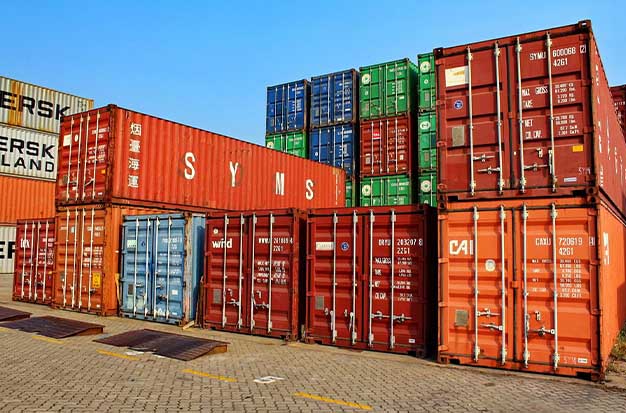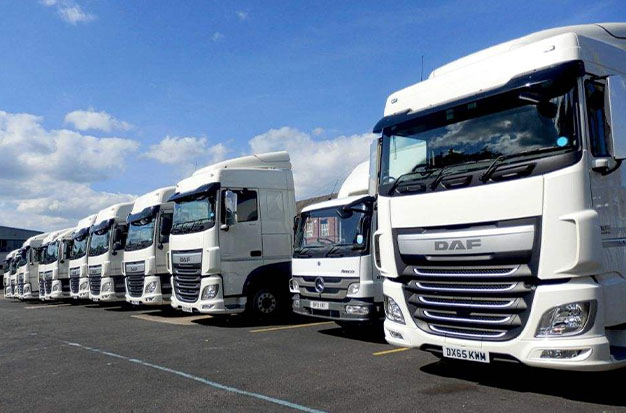Intermodal shipping and trucking go hand in hand; you must understand shipping to comprehend trucking. Intermodal shipping is the practice of moving freight using a variety of modes of transportation, such as truck, rail, or aircraft.
This article will cover everything you need to know about intermodal transportation, specifically trucking, and how Heavy Weight Transport stands out from its rivals by consistently getting your freight to you on time.
What Is Intermodal Trucking?
What does intermodal trucking mean in terms of transportation? Intermodal trucking definition: a method of moving freight that transports items in special containers on truck beds so they can be put on trains or airplanes without needing to be repackaged.
What Forms Of Transportation Are Used For Intermodal Services?
When switching between modes of transportation, intermodal transportation services entail the movement of freight inside a container without any handling of the freight itself. Rail, ship, and truck are a few of the many types of intermodal transportation methods. Rail transportation specifically refers to the movement of a shipment from one rail yard to another by train. Intermodal shipping occurs when a shipment of containers is loaded onto rail cars at a port of entry into the US. The final type of trucking is intermodal, which involves loading cargo onto a vehicle as it moves toward its destination.
Transportation Of Intermodal Freight Vs. Intermodal Trucking
How is intermodal freight transportation defined? It denotes the movement of a load of freight using two or more different modes of transportation: rail, ocean, air, or truck.
Intermodal trucking also referred to as drayage, is the transportation of goods between modes of transportation. The first and last miles of a load of freight that has been transported by rail, ship, or plane is handled by intermodal trucking, to put it another way. See more about What is Hot Shot Trucking?
Intermodal Trucking And Ocean Freight
Another instance of intermodal trucking is shown here. Let’s say that a container of T-shirts is being shipped from China. At a significant West Coast seaport, it arrives by ocean vessel. Once it arrives at the port, a sizable crane hoists the T-shirt container off the ship and onto a flatbed trailer. The trailer and container are then transported to their destination by a truck that hooks up to it. That, in a nutshell, is intermodal trucking.
Depending on the situation, that location might be the final destination or a stop in between, like a cross-dock. The needs of the load are what determines everything.
Maybe you’ve seen a huge ship loaded to the gills with containers. Take note of how the deck of this ocean liner is organized like a Lego set. There are uniform container sizes.
All containers must adhere to certain International Organization for Standardization (ISO) requirements. In other words, the same requirements must be met globally for all containers. This enables several containers to fit neatly stacked on top of one another. Additionally, containers stack neatly on top of railroad cars and on OTR trailers that trucks tow.
How Does Intermodal Trucking Operate?
An example of an intermodal mode of transportation is intermodal trucking. In order to help freight in specialized containers get to its destination, truck drivers travel anywhere from 1,200 to 4,000 miles each week. Consider intermodal trucking as one of the three components that make up intermodal transportation, along with air and rail.
The intermodal transportation process and the freight handling process typically start or end with intermodal trucking. When it comes to getting goods to their destination on time, safely, and securely, an intermodal truck driver is essential.

Benefit Of Intermodal Freight And Trucking
There are many advantages to intermodal freight and trucking, primarily financial. A lot of freight can be moved for a reasonable price using railroads and ocean liners. In total, a ship or locomotive is capable of transporting hundreds or thousands of containers. On the other hand, a truck can only move one. Moving freight in this manner can result in significant fuel savings over OTR trucking.
In turn, the shipper typically benefits from those cost savings. Intermodal containers are typically reusable, adaptable, and a great way to ship freight.
Different benefits apply to carriers who transport intermodal freight. In addition to receiving comparable compensation for transporting freight, intermodal trucking companies can save money on fuel and maintenance while preventing equipment wear and tear. However, there are other advantages to intermodal freight that cannot be overlooked. People believe that intermodal freight shipping is secure because once the cargo is in the container, no one handles it. The risk of theft or damage is reduced as a result.
You could generally list the benefits of intermodal trucking as follows:
- Carriers save fuel.
- Carriers try to keep their equipment from deteriorating.
- The majority of the time, drivers sleep at home.
- In contrast to pickup appointments at warehouses, pickup appointments at railroads are more likely to occur on time, saving time and stress.
- It’s a secure method of transporting goods.
Drawbacks Of Intermodal Freight And Trucking
On the other hand, a list of drawbacks of intermodal trucking looks like this:
- Deliveries take longer, which is bad for shippers.
- FMCSA registration procedure.
- potential aches and pains entering and exiting yards.
- There are no basic “drop-and-hooks.”
- controlling additional paperwork.
Why Do Intermodal Trucking Loads Heat Up?
Negative loading techniques frequently result in a lack of temperature. Perhaps the produce is left too long on the dock before being loaded into the refrigerated trailer.
If the chilled shipment is labeled “hot” when it is picked up, it might not be accepted when it is delivered. Restoring a refrigerated shipment that has been exposed to Mother Nature for an excessive amount of time may take too much time. Look at the most frequent problems with chilled truck loads that businesses try to prevent:
Automatic Error Detection
Drivers who are familiar with using refrigeration equipment to maintain the proper temperature for freight are desired by transportation companies. The refrigeration unit is under the drivers’ control. It is also necessary to understand how to operate the refrigeration system’s manual defrost.
To ensure the safety of your shipments, driver training is crucial and is used. Drivers are informed via notifications of any potential problems with chilled freight. See more about What Is A Straight Truck?
Avoiding Hot Freight
According to market analysts, before being loaded onto refrigerated trailers, 32% of chilled shipment is estimated to be at the incorrect temperature.
Refrigeration trailers aren’t designed to change the shipment’s temperature. They are merely intended to maintain the shipment’s temperature and prevent any temperature loss.
Avoiding Equipment Failure
Mechanical equipment in refrigeration trailers can malfunction and be impossible for drivers to repair. The temperature-controlled freight is no longer considered usable if the machinery breaks down.
There are numerous alarms, faults, and codes on intermodal truck refrigeration equipment. To ensure that everything is operating as it should, these units are closely watched.
Immediate Proof On Delivery
Truck drivers are frequently held to blame first when something goes wrong. Auditing and documentation are crucial parts of the process to prevent this problem with refrigerated truck deliveries!
Complying With Regulations
The Food Safety Modernization Act guarantees American security. meals from coast to coast is intact. Intermodal truck drivers make sure your shipments are perfectly compliant with temperature control regulations, reporting, and report maintenance.
Conclusion
The freight and the consignee must both be located within about 100 miles of a rail hub, which is ultimately the key to intermodal trucking. Sometimes a load simply cannot be supported by it. But when it does, you can really benefit from intermodal freight’s strength.
Don’t confine yourself to a single form of transportation. Always keep in mind that a supply chain is only as strong as its weakest link.
